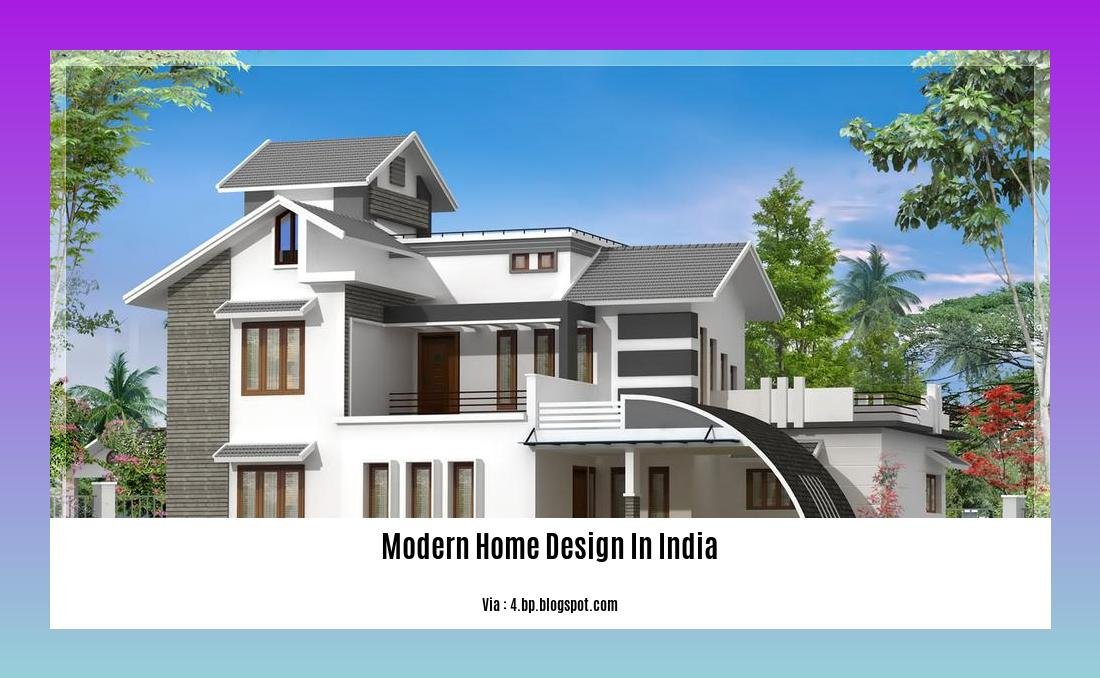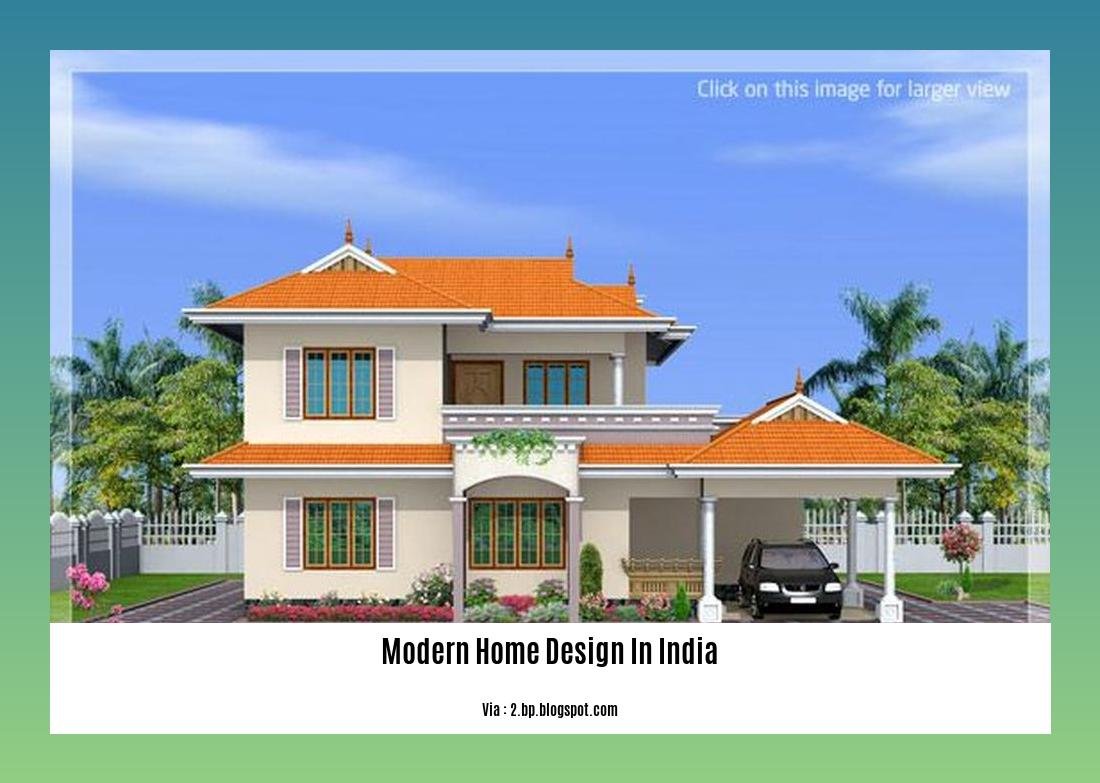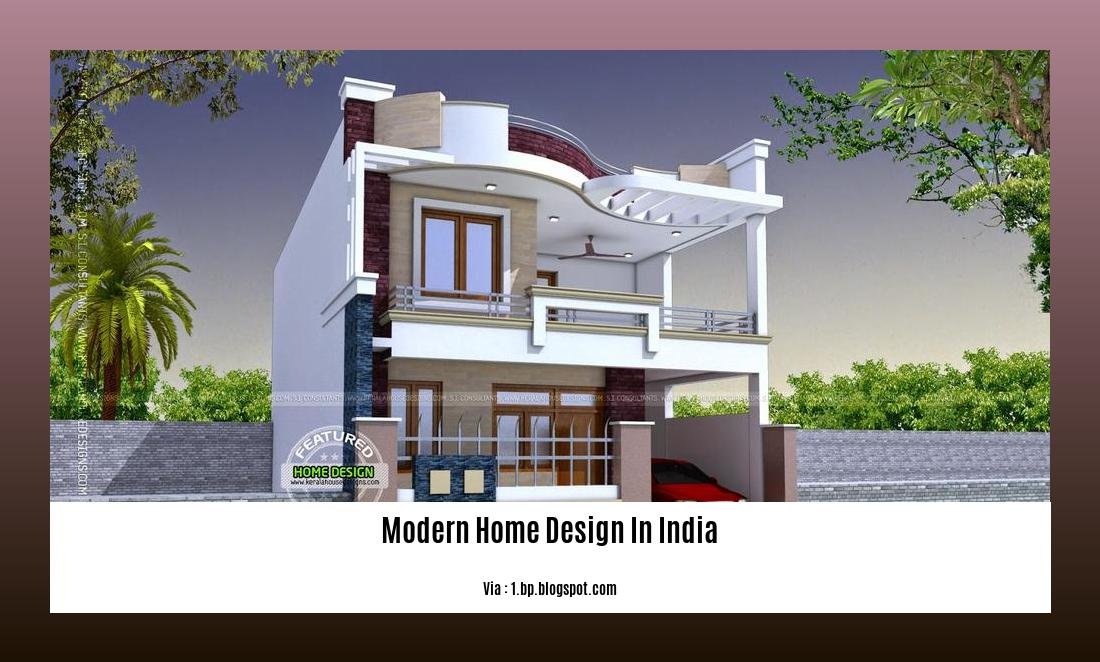Welcome to our insightful article, “Exploring the Blend of Traditional Indian Aesthetics and Contemporary Elements in Modern Home Design in India.” In this piece, we delve into the fascinating world of modern home design in India, where traditional Indian aesthetics harmoniously coexist with contemporary elements. With a deep understanding of cultural nuances and an eye for detail, we will guide you through the art of seamlessly blending the past and the present to create thoughtfully curated spaces that reflect your personality and elevate the concept of modern Indian home design. Prepare to be inspired as we unravel the secrets behind transforming your living spaces into veritable works of art.
Key Takeaways:
- Modern home design in India has been gaining popularity in recent years.
- Interior designers in India are embracing minimalism and the philosophy of ‘less is more’ to create comfortable living spaces.
- Modern Indian home designs showcase a unique blend of traditional and contemporary elements.
- Houses like Cuckoo’s Nest, Maison Kochi, Tube Well House, Clay Screen House, and White Skube House exemplify this blend of traditional Indian aesthetics and modern design.
- These house designs utilize a mix of materials, open-plan living, and integration of traditional elements like courtyards to create visually striking and functional spaces.
- The combination of clean lines, open spaces, and unique materials results in stunning and innovative living spaces.
Modern Home Design in India

Modern home design in India has seen a significant shift in recent years. With the rising popularity of minimalist aesthetics, interior designers in India have embraced the philosophy of ‘less is more’ to create comfortable and visually stunning living spaces. In this article, we will explore some remarkable modern house designs in India that beautifully blend traditional Indian aesthetics with contemporary elements.
Cuckoo’s Nest by Between Spaces
One outstanding example of modern home design in India is the Cuckoo’s Nest by Between Spaces. This house, located on a corner plot, features an open-plan arrangement that creates a sense of spaciousness. The architects have skillfully utilized a mix of materials such as concrete, glass, and wood to give the house a contemporary look. The use of large windows allows ample natural light to flood the interiors, creating a harmonious connection with the outdoor environment.
Maison Kochi by Meister Varma Architects
Maison Kochi by Meister Varma Architects is another small house that exemplifies modern home design in India. This house emphasizes open-plan living and flow of space, with a design that seamlessly incorporates traditional courtyards. By blurring the lines between modern and traditional architecture, Maison Kochi creates a unique and inviting living experience. The courtyards not only provide natural light and ventilation but also serve as beautiful transitional spaces within the home.
Tube Well House by Atelier Shantanu Autade
The Tube Well House by Atelier Shantanu Autade showcases a unique blend of modern and traditional architectural elements. The front façade of this house, facing west, is designed to maximize natural lighting and ventilation. With its strategic use of windows and open spaces, the architects have created a home that is not only aesthetically pleasing but also environmentally friendly. The integration of traditional elements adds a touch of cultural richness to the overall design.
Clay Screen House by Manoj Patel Design Studio
If you’re looking for a visually striking modern home design in India, the Clay Screen House by Manoj Patel Design Studio is worth exploring. This house features a volume made entirely of clay screens, creating a unique and artistic effect. The design successfully combines modern aesthetics with traditional materials, resulting in a harmonious blend that celebrates Indian craftsmanship. The clay screens not only add a sense of texture and warmth to the home but also allow for natural ventilation.
White Skube House by Srijit Srinivas-ARCHITECTS
Another noteworthy example of modern home design in India is the White Skube House by Srijit Srinivas-ARCHITECTS. This house stands out with its skewed shape on a restricted plot, showcasing the innovative thinking of Indian architects. The minimalist design and use of angular forms create a striking visual impact. The White Skube House exemplifies the essence of modern architecture, where simplicity and functionality go hand in hand.
Modern home design in India embraces minimalism while blending traditional and contemporary elements. These remarkable house designs showcased in this article are a testament to the creativity and innovation of Indian architects and designers. The combination of clean lines, open spaces, and unique materials result in stunning and functional living spaces that truly reflect the spirit of modern Indian home design.
For all those looking for the perfect Kerala Style Home Plans Single Floor, look no further! We have a fantastic collection of plans available for you to explore: kerala style home plans single floor.
Discover the ultimate Kerala Style House Plans Single Floor that will fulfill all your dreams of the ideal home. Explore our exquisite collection now: kerala style house plans single floor.
Planning a mezzanine floor? Wondering about the minimum ceiling height required? Get all the answers and guidance you need right here: minimum ceiling height for mezzanine floor.
Before constructing a mezzanine, ensure you know the minimum height required. Discover the essential information here: minimum height for mezzanine.
Popular Design Styles in Modern Indian Homes

Contemporary Indian homes are a beautiful fusion of traditional aesthetics and modern design elements. With a focus on minimalism and functionality, interior designers in India are creating thoughtfully curated spaces that reflect the essence of modern Indian home design. Let’s explore the blend of traditional Indian aesthetics and contemporary elements in popular design styles in modern Indian homes.
Bright Colors and Intricate Patterns
Indian interior design is known for its vibrant color palettes and intricate patterns. Incorporating these elements into contemporary homes adds a soulful and rooted ambiance. The use of bold and bright colors on accent walls or in accessories brings life and energy to the space. Additionally, incorporating intricate patterns through wallpapers, textiles, or carved woodwork adds depth and visual interest to the design.
Solid Wood Furniture and Handwoven Fabrics
Traditional Indian furniture made from solid wood, such as teak or rosewood, brings a sense of warmth and longevity to modern homes. These timeless pieces blend seamlessly with contemporary design elements. To add texture and authenticity, interior designers often use handwoven fabrics like silk or cotton in upholstery or decorative accents. These materials not only add a touch of luxury but also showcase the rich heritage of Indian craftsmanship.
Open-Plan Arrangements and Courtyards
Modern Indian homes often embrace open-plan arrangements, which create a sense of spaciousness and promote seamless flow between different areas. This design style allows for a cohesive and interactive living experience. Additionally, traditional courtyards are frequently incorporated into modern homes, providing a connection to nature and enhancing natural lighting and ventilation.
The Use of Sustainable and Natural Materials
Sustainability plays a crucial role in contemporary Indian home design. By utilizing sustainable materials, interior designers strive to create eco-friendly spaces. Incorporating natural materials like clay, bamboo, or stone not only adds an organic touch but also promotes a healthy living environment. These materials bring texture, warmth, and a connection to nature into modern Indian homes.
Merging Traditional Decor Elements with Contemporary Design
A defining feature of modern Indian home design is the seamless integration of traditional decor elements into contemporary spaces. Interior designers skillfully incorporate elements like traditional paintings, sculptures, or artifacts to create a sense of heritage and cultural identity. By blending these elements with modern furniture and accessories, they strike a balance between the old and the new, resulting in visually stunning and culturally rich interiors.
Key Takeaways:
- Modern Indian homes blend traditional Indian aesthetics with contemporary elements, creating a unique and soulful ambiance.
- Bright colors and intricate patterns are integral to Indian interior design, adding vibrancy and visual interest.
- Solid wood furniture and handwoven fabrics showcase the richness of Indian craftsmanship.
- Open-plan arrangements and traditional courtyards promote spaciousness, connection to nature, and healthy living.
- Sustainable and natural materials are used to create eco-friendly spaces.
- Traditional decor elements are seamlessly integrated into contemporary design, reflecting the cultural heritage of India.
SOURCES:
– The Architects Diary – 20+ Remarkable Modern House Design in India
– Architectural Digest India – 4 modern Indian homes built around traditional courtyards
Sustainable Materials and Techniques in Modern Indian Home Design
In modern Indian home design, there is a growing emphasis on incorporating sustainable materials and techniques. This not only reflects a commitment to environmental consciousness but also adds unique character and aesthetics to the living spaces. As an experienced interior designer, I have witnessed firsthand the importance of sustainable design practices in creating thoughtfully curated spaces that align with the values and lifestyles of my clients.
The Fusion of Traditional and Contemporary Elements
One of the key aspects of modern Indian home design is the blending of traditional aesthetics with contemporary elements. This fusion allows for the integration of sustainable materials and techniques while preserving the rich cultural heritage of India. Designers strive to strike a balance between aesthetics and functionality by incorporating natural light and ventilation, utilizing local materials, and implementing sustainable construction practices.
Embracing Natural Materials
Indian architecture has a long history of embracing natural materials, and this tradition continues in modern home design. Sustainable materials such as bamboo, timber planks, limestone masonry, and locally sourced materials are extensively used in the construction of Indian homes. Not only do these materials contribute to sustainable practices, but they also add a touch of warmth and authenticity to the living spaces.
Strategic Ventilation
Incorporating strategic ventilation techniques is another hallmark of sustainable design in modern Indian homes. Influenced by ancient Indian architecture, modern designers utilize features such as arches, wind catchers, courtyards, and verandas to maximize natural ventilation. These techniques not only promote energy efficiency but also create pleasant indoor environments that are conducive to the well-being of the occupants.
Smart Integration of Sustainable Technologies
Modern Indian home design also incorporates the use of sustainable technologies to further enhance energy efficiency and reduce environmental impact. This includes the integration of solar panels for harnessing renewable energy, rainwater harvesting systems to conserve water, and smart home automation systems for efficient energy management. These innovative solutions showcase the versatility of sustainable design in meeting the evolving needs of contemporary homeowners.
Key Takeaways:
- Modern Indian home design seamlessly brings together traditional aesthetics and contemporary elements, providing a unique blend of cultural heritage and sustainable design practices.
- Sustainable materials such as bamboo, timber planks, and locally sourced materials are extensively used, adding character and warmth to the living spaces.
- Strategic ventilation techniques inspired by ancient Indian architecture maximize natural light and airflow, promoting energy efficiency and well-being.
- The integration of sustainable technologies like solar panels, rainwater harvesting systems, and smart home automation further enhances energy efficiency and reduces the environmental impact.
Sources:
– Architectural Digest India
– ArchDaily
Incorporating Traditional Indian Aesthetics in Modern Home Design
Indian modern home decor is a captivating blend of traditional elements and contemporary design. It seamlessly merges the rich cultural heritage of India with the functionality and aesthetics of modern living. This fusion creates a harmonious balance between tradition and innovation, resulting in unique and visually stunning spaces.
Adding Vibrant Home Decor Pieces and Artworks
One way to incorporate Indian modernism at home is by adding vibrant home decor pieces, artworks, and antiques. These elements bring a touch of Indian culture and heritage to the space. However, it is important to use them in moderation to maintain a balanced and cohesive look.
Incorporating Traditional Motifs and Designs in Wall Art
Wall art is another key element in Indian modern home decor. The choice of artwork can reveal the owner’s personal taste and cultural background. Incorporating traditional motifs and designs in wall art adds a distinct Indian flair to the space.
Infusing Indian Elements with Temporary Structural Features
Temporary structural elements can also be utilized to infuse Indian elements into modern home design. These elements include architectural features like arches, pillars, and carved woodwork. Incorporating these elements can add a touch of grandeur and opulence to the space.
Utilizing Traditional Materials for Authenticity
Materials play a significant role in Indian modern home decor. Traditional materials such as wood, marble, and brass are often used to create a sense of luxury and authenticity. These materials can be incorporated into furniture, flooring, and accessories to add a touch of Indian elegance.
Enhancing the Space with Traditional Indian Accessories
Accessories are another way to bring Indian modernism into the home. Just like artwork, the choice of accessories reflects the owner’s personal style and cultural influences. Traditional Indian textiles, cushions, rugs, and artifacts can be used to enhance the overall look and feel of the space.
In conclusion, incorporating traditional Indian aesthetics in modern home design allows for a beautiful amalgamation of tradition and contemporary design. By adding vibrant home decor pieces, incorporating traditional motifs in wall art, utilizing temporary structural elements, using traditional materials, and enhancing the space with Indian accessories, one can create a unique and captivating ambiance in their home that reflects the rich cultural heritage of India.
Key Takeaways:
- Indian modern home decor blends traditional elements with contemporary design.
- Adding vibrant home decor pieces and artworks brings Indian culture and heritage into the space.
- Traditional motifs and designs in wall art add a distinct Indian flair.
- Temporary structural elements like arches and pillars infuse Indian elements into modern home design.
- Traditional materials such as wood, marble, and brass create a sense of luxury and authenticity.
- Accessories like textiles, cushions, rugs, and artifacts enhance the overall look and feel of the space.
Sources:
– Architectural Digest: Home Decor: What is Indian Modernism?
– Hindustan Times: Home decor ideas: Tips to incorporate Indian crafts into modern
FAQ
Q1: What is modern home design in India?
A1: Modern home design in India refers to the architectural and interior design styles that combine contemporary elements with traditional Indian aesthetics. It emphasizes clean lines, open spaces, and the use of sustainable materials to create visually striking and functional living spaces.
Q2: How do interior designers in India blend traditional and contemporary elements in modern home design?
A2: Interior designers in India blend traditional and contemporary elements in modern home design by incorporating traditional Indian decor elements, such as bright colors, intricate patterns, solid wood furniture, and handwoven fabrics, into contemporary design. They also utilize traditional architectural features, such as courtyards and verandas, and integrate them with modern design concepts.
Q3: What are some notable modern house designs in India?
A3: Some notable modern house designs in India include Cuckoo’s Nest by Between Spaces, Maison Kochi by Meister Varma Architects, Tube Well House by Atelier Shantanu Autade, Clay Screen House by Manoj Patel Design Studio, and White Skube House by Srijit Srinivas-ARCHITECTS. These houses showcase unique architectural styles and innovative design concepts.
Q4: How does Indian modern home decor incorporate traditional elements?
A4: Indian modern home decor incorporates traditional elements by adding vibrant home decor pieces, artworks, and antiques that reflect Indian culture and heritage. It also includes traditional motifs and designs in wall art, utilizes temporary structural elements like arches and carved woodwork, and incorporates traditional materials such as wood, marble, and brass into furniture, flooring, and accessories.
Q5: How does Indian modern home design embrace sustainability?
A5: Indian modern home design embraces sustainability by utilizing natural materials and sustainable construction practices. This includes the use of materials like bamboo, timber planks, and locally sourced materials, as well as strategic natural ventilation and the integration of sustainable design principles.
- Best Finish for Butcher Block Countertops: Choosing the Right Option - December 30, 2025
- Seal for butcher block: Find the best food-safe finish - December 29, 2025
- Finishes For Butcher Block Counters: Choosing The Right Food-Safe Option - December 28, 2025










